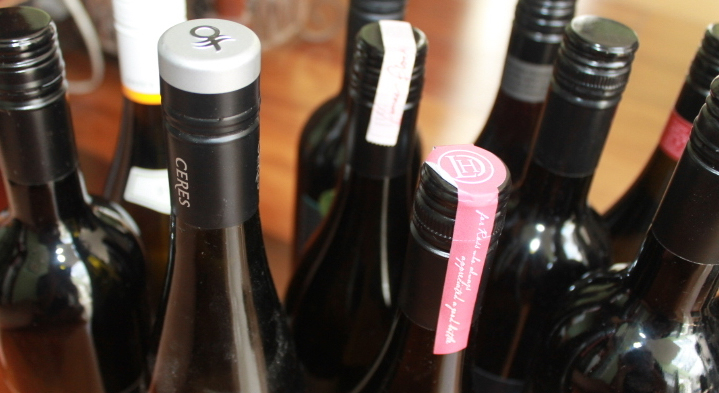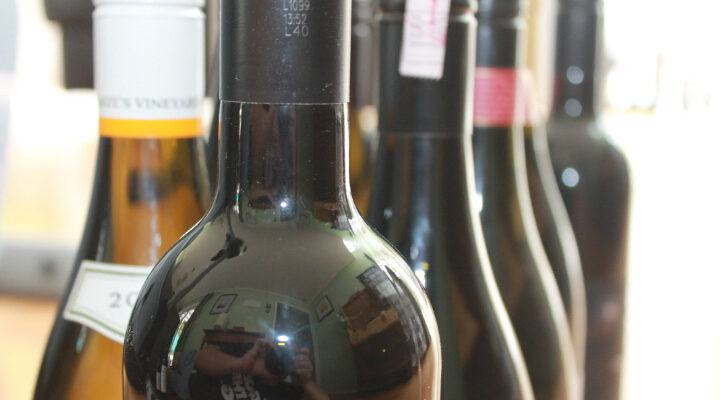There are many an interesting topic you may come across now and then in the world of wine. Last week I was asked an opinion about ‘cult’ wines, and did I think a certain wine was one? That wine was ‘Valhalla’ from Man O’ War. Now I’m a bit conflicted on that – a lovely example of the modern style, full-on and intense – but surely it’s too easy and obvious a wine to come by – and, anyway, how do you define a ‘cult’ wine?
To me it probably needs to be hard to get, and highly prized and awarded. Great reviews will help but that’s not all. And context – what we may not think is that special, may be coveted overseas…
Many of the wines that people will list, when pressed, in a line up of Cult Wines, are surrounded by a layer of mystique. You can only satisfy your desire and intrigue about them by getting to taste one of them. But how? Often the availability (or supply even) of them is so low that even those who could easily afford to buy them – price is very often a factor (more later) – simply can not. Money cannot buy you everything.
Actually, the lack of supply will almost always mean that the price goes up – often to what might seem ridiculous heights. And of course, that raises the bar in terms of fame and guess what – the price goes up (even more).
One of the best discussions I had on defining a cult wine came from a chat with Reg Hawkins. He had this excellent comment to make: “The wines themselves would have to boast a high degree of personality and ideally ageability along with the expected vinous qualities without being overwrought in any way. Cult labels could either have subtle, effective marketing or none at all with their brand identity issuing from their intrinsic merits and stories. All up, wines that resonate with me are ones which operate in a visceral way; their whole being greater than the sum of their parts. In saying this they don’t have to be fine or rare, just characterful and memorable.”
One factor in Cult Wines is that it might only be one specific example of a wine. The winemaker may have a range of wines that they make – yet there’s only one of their examples that becomes a Cult? Marcel Giesen is one of the people behind Bell Hill – a superb label from Weka Pass – but is also one of the Giesen brothers, from the well-known Marlborough wine family. I picked up a bottle of 2014 Clayvin Vineyard Pinot Noir from Giesen (and I believe that Marcel is the leading hand in Giesen’s custodianship of this vineyard) for under $35 this year – yet Bell Hill remains stoically priced at $125. Of course, these are two very distinct wines, and I am in no way trying to compare them – simply mentioning that the same hand has a part to play in both wines, with different pricing, and status, outcomes.
Other times, a wine maybe seen as fitting the ‘cult’ bill if it’s only made in special, great vintage, years – New Zealand has a few examples of this, and winemaker Paul Dawick had this to say about one of his stable of wines: “I think top labels that are only made on exceptional vintages. Mills Reef Elspeth for example. Not wines made every year at the same price regardless of the quality of the season.”
I asked for comments on the subject on social media and Jules van Costello – owner incidentally of a wine shop named ‘Cult Wine’ – and therefore who better to give an opinion on the subject! He reacted with “Bell Hill, Kusuda, Destiny Bay” – which is incidentally some of the names that cropped up in the original real-life discussion that came out of the ‘Valhalla’ suggestion.
When pressed further, Jules also had this to say – “the way I tend to describe classic “cult wines” are wines which have their high prices legitimised by tiny volumes. Not to say they are not worth it, but people will pay more for something no one else has!”
Another contributor: Don Kavanagh has this to say about the idea of a New Zealand Cult Wine: “I think the definition of a cult wine is one whose price is kept high by a dedicated cohort of fans, who are quite happy to pay a premium to get hold of the wine, thereby keeping the prices up and the supply limited. After that, market forces of supply and demand tend to keep the prices high. However, they do have to be consistently good, otherwise their cachet among the faithful will fade and the price could fall. An example from NZ might be Destiny Bay Magna Praemia from Waiheke, or Providence from Matakana.”
Sometimes the Cult Wine is born from a specific site – in France they could label this as Grand Cru. For someone like Tim Turvey at Clearview, there are a couple of rows in the middle of his Chardonnay vines – the oldest vineyard on the site – that get thinned down to around 7 bunches per vine, and go into his very top expression – Endeavour. It’s a very specific wine, and the nuances that make it so – when it’s surrounded by other rows and vines that also make some extremely good Chardonnay (Clearview Reserve and Three Rows took out second and third spots in our Top 10 Tasting this September) – the little differences add up to a couple of percentage points of advantage, value and acclaim.
Somewhere like the Rhone Valley, a Grand Cru site can be right across a lane to another vineyard site that doesn’t have that designation, and makes wines of similar quality – since so much of a great wine is derived from the vineyard. In these examples, a cult wine can lead to the rise in appeal of whole regions surrounding it. You could argue that somewhere premium winegrowing areas like Napa Valley can trace their cachet back to the single tasting – the ‘Judgement of Paris’ in 1976. Even now, something like Screaming Eagle has driven a rise in value of many of its East Oakville neighbours well into the $200+ range.

What about a wine that is so incredibly cult, that it’s devotees will buy it no matter what? One example is Sine Qua Non from Santa Barbera. This is surely the definition of a Cult wine – after all – a Cult is something where you follow a leader and whatever they say? This label produces not just a wine with a different name, and label – and often, even bottle shape – for every vintage… but the wine inside the crazy cool exterior is often different too. Generally focussed on Rhone varieties, but their followers will try and buy anything that Manfred and Elaine Krankl produce, it seems.
I have often wondered whether Cult Wines can be intentionally made, as well? Wines that are deliberately intended to be released in tiny quantities and priced as ‘ultra-premium’ wines, right from their inception? Or, can you separate out the pricing and the quantity and say that either one is a leader to Cult status?
Jemma Grobelaar, of jemma.co.nz says: “A wine that if you could get easily, no one would want… like an anti marketing wine that you don’t need to advertise as it sells itself via word of mouth and high demand because of factors like Supa hot branding, consistently magnifique vintages from small parcels of land or specific microclimates. In the case of 777 Penfolds it’s the strong branding and inner circle sort of relationship that is formed when people get to drink the wine.”
I was in conversation with Matt Aitchison, one of New Zealand’s best sommeliers, and who has crafted an interesting wine list for his new venture ‘Stanley Avenue Wine Bar’ on Auckland’s North Shore, I took the opportunity to pick his brains on the subject. Matt said “I’m not into the cult wine aspect personally. I think the rarity of a wine like Kusuda Pinot Noir makes it desireable – not everyone has heard of it. Not everyone can get it. We’ve had a few conversations where people have asked if we could get hold of certain wines. Certain brands, they make it exclusive – price it high and make it rare. The rarer it is, the harder people try to obtain those wines. More in private collection terms though rather than retail or restaurant sales.”
Some wines are very limited in production – and can be snaffled up by buyers on exclusive lists, only for those wines to be gradually released onto the secondary market – like reputable auctions – and command prices that are double, triple (or more) the price paid on release. I’ve had a different experience of this – where I had scored an allocation of a wine that was limited in production (and very good) – and a friend wanted to get hold of a bottle of it. Of course, it’s not available in retail, or even directly from the maker – so they reach out to me as a known admirer of said wine. I’m not keen to sell, but offer up the opportunity for a swap – and am offered a trade quite out of balance in terms of pricing, but probably quite reasonable if you consider the rarity and desirability factors.
Writer and broadcaster, Mary-Therese Blair (Mermaid Mary) comments: “For me ‘Cult’ is a wine that is consistently excellent regardless of price or production size. I don’t think a newbie can be ‘cult’ as they haven’t shown that level of consistent vintage after vintage quality. A wine that springs to mind is Te Whare Ra’s ‘Toru’.”
Are scores and reviews from critics a big factor in the creation of Cult Wines? I think so. Our most famous wine scorer, Robert Parker, will play a part in the rise in status and therefore price of a wine that is scored highly. His use of the 100-point scale has resulted in the new-ish term ‘100-point wine’ where the wine is judged to be ‘perfect’. Who wouldn’t want to try a perfect wine? An excellent review and rating is likely to be a decent indicator of quality, yes – but is after all, only an opinion, of typically one person on one day.




